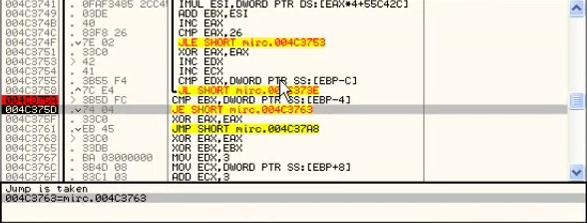Creare Un Keygen Software

Generate your private and public PGP keys online. This PGP key generator is does not require you to install any software and your PGP keys remain confidential.
• Introduction In this simple article, I am going to show how you can protect your software from unauthorized copying by creating a serial number/activation key pair based on the physical address (MAC) of the network adapter on the client's machine. Getting the MAC Address and Generating the Serial Number The first step is to get the MAC address of the client's machine. This could be achieved by using the ManagementClass class located in the System.Management assembly. We have to add a reference to that assembly to our project, and import it into SecurityManager.vb, which will be the class in which we place the GetSerial() and CheckKey() functions.
These two functions will be responsible for generating the serial number from the MAC address and checking whether the key entered by the user is valid. As a first step, we define the GetSerial() function as follows: Public Function GetSerial() As Long Dim mc As New ManagementClass('Win32_NetworkAdapterConfiguration') Dim mac As String = ' ' Getting network adapters collection Dim moc As ManagementObjectCollection = mc.GetInstances ' Here we iterate over available network adapters, ' picking the first possible one For Each mo As ManagementObject In moc If mo.Item('IPEnabled') Then mac = mo.Item('MacAddress').ToString Exit For End If Next mc.Dispose() ' This is a simple function that we use to get a serial out ' of our MAC address. Say that x is the MAC and y is the serial, ' the function would be y += x[i] + (i * 2) where i is the index ' of MAC address element. JimSharples 18-Oct-12 21:52 18-Oct-12 21:52 ManagementClass in the SecurityManager Class GetSerial() Function does not appear to work under.Net 4. I substituted the following: Imports System.Net.NetworkInformation Public Function GetSerial() As Long Dim mac As String = ' ' Dim nics As NetworkInterface() = NetworkInterface.GetAllNetworkInterfaces() If nics Is Nothing OrElse nics.Length 0 Then Exit For Next End If ' In case we get no valid adapter (unlikely), then If Len(mac) = 0 Then mac = ' 6CF0490FC2F6'.
Continue with GetSerial function. This is the whole alternative function. The way I use it is to check for a file (called 'Z1' or anything you choose) in the application folder when my application starts. If it does not exist, the program has been run for the first time, and I notify the user that they have 10 (or whatever) times left to run the program.
I store the number 9 in the Z1 file. Next time the program is run, I check for Z1 again, see it has number 9 stored, inform the user they have 9 more times left, and store 8 in the file etc etc. The program has a menu item 'Register'.
If they do supply the correct serial/key pair, then I store 'Registered to xxxxx' in the Z1 file. When the program starts and the string 'Registered' is in the file, I use the whole line in the title bar of the app and do not check further. This is very simple and easy to crack, but it is only meant for the average user.
Benefits of Public & Private SSH Keys If your headless, or remote, VPS is visible over the Internet, you should use public key authentication instead of passwords, if at all possible. This is because SSH keys provide a more secure way of logging in compared to using a password alone. While a password can eventually be cracked with a, SSH keys are nearly impossible to decipher by brute force alone. With public key authentication, every computer has (i) a public and (ii) a private 'key' (two mathematically-linked algorithms that are effectively impossible to crack). Today, is the default SSH implementation on Unix-like systems such as Linux and OS X. Key-based authentication is the most secure of several modes of authentication usable with OpenSSH, such as plain passwords and Kerberos tickets. Other authentication methods are only used in very specific situations.

SSH can use either 'RSA' (Rivest-Shamir-Adleman) or 'DSA' ('Digital Signature Algorithm') keys. Both of these were considered state-of-the-art algorithms when SSH was invented, but DSA has come to be seen as less secure in recent years. RSA is the only recommended choice for new keys, so this tutorial uses 'RSA key' and 'SSH key' interchangeably. When you log in to your DigitalOcean VPS, the SSH server uses the public key to 'lock' messages in a way that can only be 'unlocked' by your private key. This means that even the most resourceful attacker cannot snoop on, or interfere with, your session.
Enya full discography torrent download pc. As an extra security measure, some users and most SSH programs store the private key in a passphrase-protected format, to provide a window of time in which you can disable your compromised public key, should your computer be stolen or broken in to. For these reasons, public key authentication is a much better solution than passwords for most people.